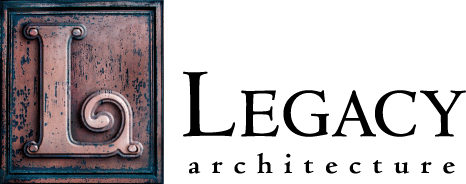Downtown Churches Historic District, Sheboygan, Sheboygan County, WI
National Park Service website Preservation Month Feature, May 2010.
Situated between the downtown business district and a much larger late 19th and early 20th century residential area in Sheboygan, Sheboygan County, Wisconsin; the Downtown Churches Historic District is a well defined cluster of religious buildings. The 9-building district is located just west of the northern portion of the 8th Street business district, bounded by Erie Avenue on the north, North 6th Street on the east, Ontario Avenue on the south, and North 7th Street on the west. The four congregations located in the district represent four distinct faiths, each with a medium-sized, well-designed, and well-maintained church building. The diversity of the churches in the district is representative of the prevailing architectural styles of their time, including High Victorian Gothic, late Gothic Revival, elements of Tudor Revival, and Contemporary architectural styles, reflecting 100 years of religious architecture spanning from 1871 to 1968. The Downtown Churches Historic District was listed in the national Register of Historic Places on March 1, 2010.
The nine buildings (including four churches) in the district are Grace Episcopal Church Rectory, constructed in the mid-1850s and located at 1014 North 6th Street, the Grace Episcopal Church constructed from 1867-1871 and located at 1011 North 7th Street, the First Methodist Episcopal Church, constructed in 1929-1930 and located at 623 Ontario Avenue, the Hope Reformed Church constructed in 1937 along with the Hope Reformed Church Rectory located at 612 Ontario Avenue, St. Mark Lutheran Church constructed in 1968 1019 North 7th Street constructed in 1968. The other buildings are church garages belonging to the Grace Episcopal Church, Hope Reformed Church and St. Mark Lutheran Church, and are not important historically in the context of the historic district.
The historic district is worthy of National Register listing due to its fine example of religious architecture in Sheboygan. One of the churches, Grace Episcopal Church, is also important for the social history for historical events that made an important contribution to the history of the Scouting in the City of Sheboygan and the State of Wisconsin. The City of Sheboygan, located where the Sheboygan River flows into the western shore of Lake Michigan, was first declared a village in 1846, and was incorporated as a city in 1853. Beginning after the Civil War, the rapid growth of Sheboygan's furniture industry caused the population to swell from 8, 500 residents in 1884 to 21,200 in 1900-eventually Sheboygan became the state's eighth largest city in 1929. Not surprisingly, a stream of settlers brought several Protestant denominations with them, including Episcopal and Methodist, which are evident in the district. Grace Episcopal Church was first established in 1847, and the current building, completed in 1871, replaced the earlier church. The Grace Episcopal Church is a fine example of High Victorian Gothic style, and is significant for the founding of Wisconsin's first Boy Scout Troop 1 on February 12, 1911-the movement came from Britain to the United States in October 1910.
The First Methodist Episcopal and Hope Reformed churches are fine examples of a Late Gothic design, while St. Mark Lutheran Church was a contemporary style church built in 1967 over the original church and designed by local architect Richard J. Jarvis. The Hope Reformed Church was the last congregation to come to the district—while the congregation dates back to 1890, construction of the church itself began in April 1937. Sheboygan attracted professional architects since its founding as a city.
All but four of the resources identified within the district could be attributed to a particular architect. The earliest building in the district, Grace Episcopal Church, was designed by William Russell West of Cincinnati, Ohio, with the first substantial addition designed by local architect William C. Weeks (born in 1856). When Hope Reformed Church decided to build in the district, they called upon Edgar A. Stubenrauch (1894-1988), a native of Sheboygan 1894 and designed many local buildings in the city. His successor firm did the contributing 1956 addition to the First Methodist Episcopal Church, the 1967 design of St. Mark Lutheran Church and the 1995 addition and remodeling of Grace Episcopal Church-after over 80 years of operation, The Stubenrauch Associates closed its doors early in 2004. An exception to the local architects was the 1958 expansion and remodeling of Grace Episcopal Church by Milwaukee architect Richard W. Phillip. All the churches in the historic district are of similar size and scale, ranging from 11,600 square feet to 17,700 square feet. All of the church walls are constructed of masonry, whether it is brick, stone, or a combination of the two, and the walls contain numerous stain glass windows. The churches are well preserved.
National Park Service website: http://www.nps.gov/history/nr/feature/presmonth/2010/Downtown_Churches_Historic_District.htm. May 2010.

-High.jpg)